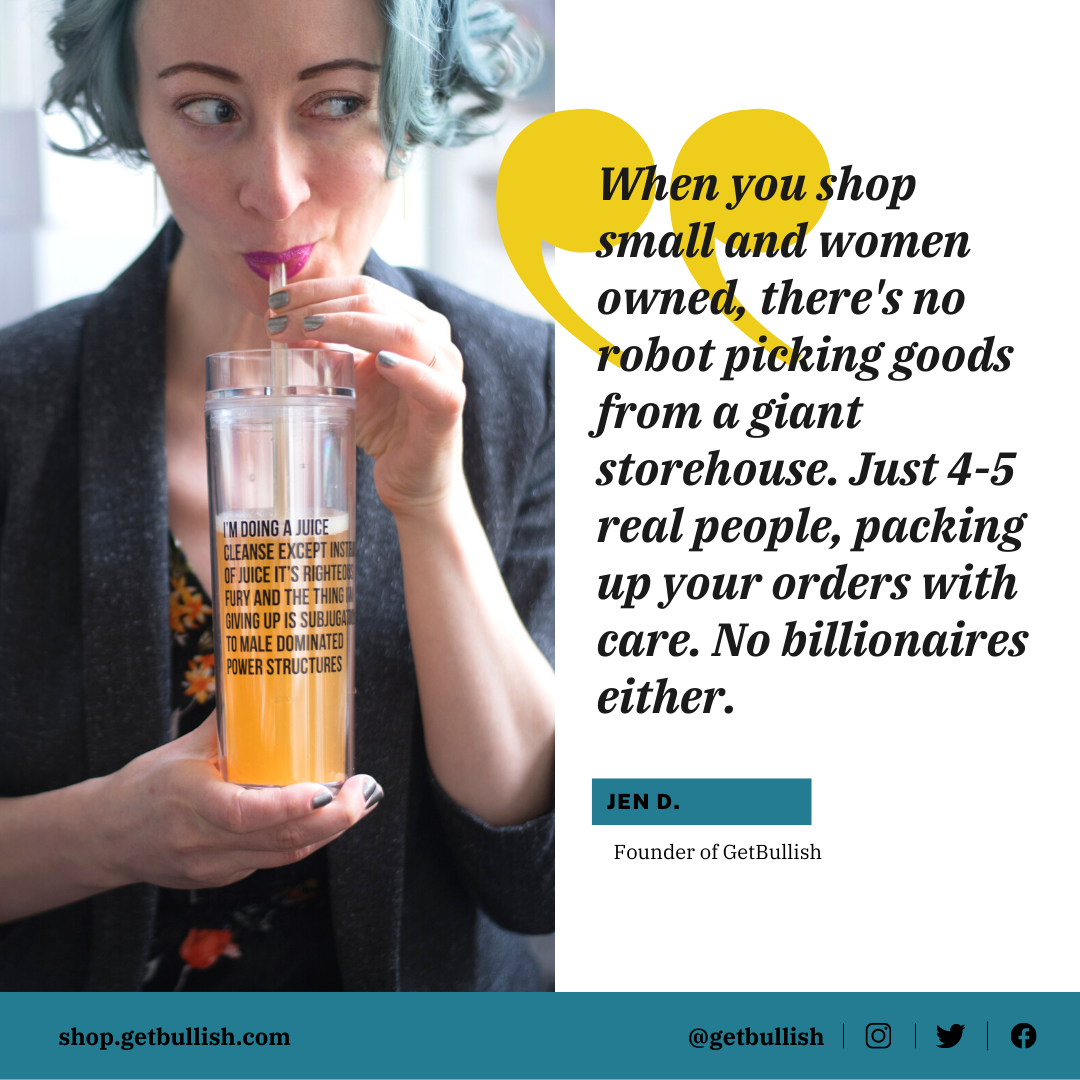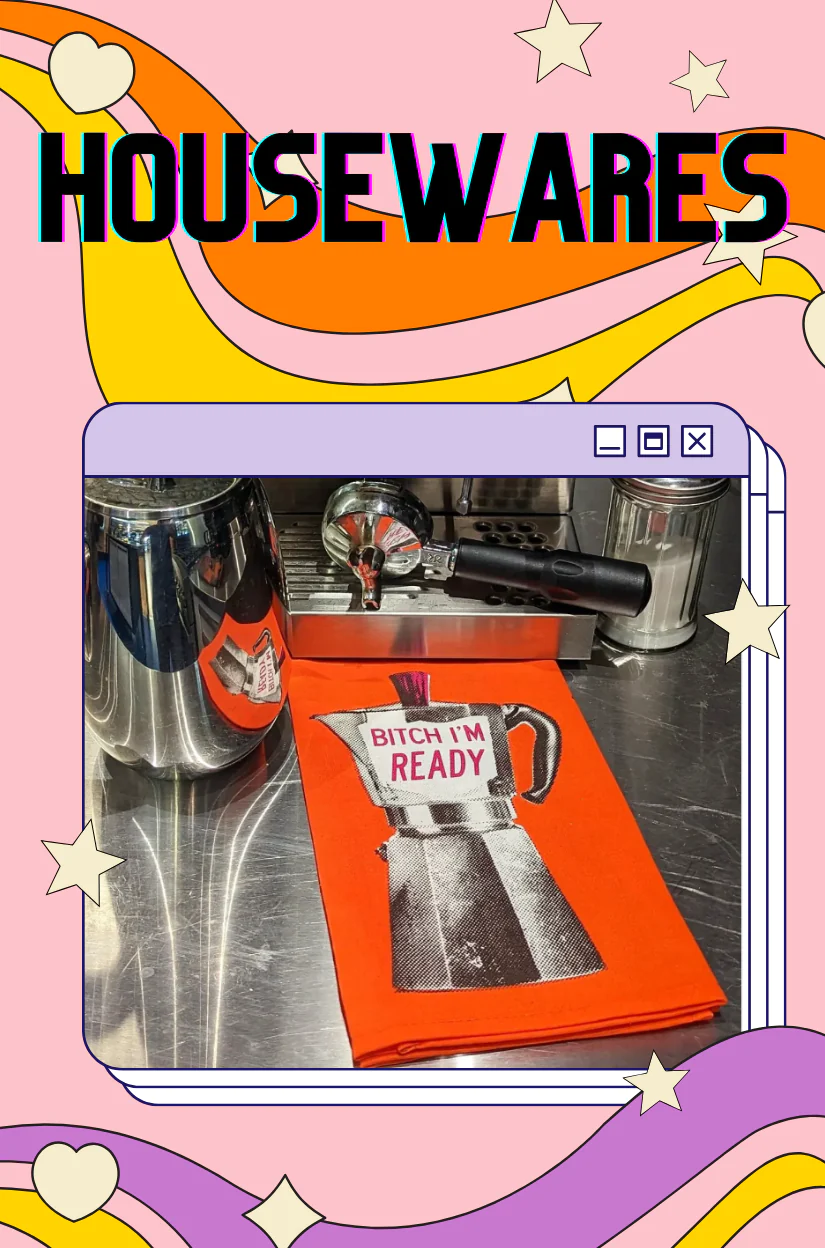If you’re reading Bullish two days before Christmas, either you don’t celebrate Christmas, or else you are mid-sculpture / business plan / book / musical composition. All of which I support. (Remember when Bullish cockblocked Thanksgiving?)
As I discussed in Personality Qualities That Are Way More Important Than Anything on Your Resume, you can’t just have a job anymore. So, when other people are quaffing eggnog is when it is your chance to get ahead; watch as your competitors fatten themselves up for the kill!
I jest, I jest (sort of). It certainly is important to take time out to recharge and to spend time with loved ones. But I’ll bet there are some people in your family you don’t even love, much less like. So that’s some time saved right there! Seriously: how much of the lazy-time around the holidays is actually quality family time, or any kind of real pleasure? At my familial homestead, a lot of it is sitting on the couch watching cop shows. So, rather than lose a day to twelve hours of low-intensity family prattle, there’s nothing wrong with taking charge and making suggestions for quality time (“I really want to play Scrabble after dinner! Who’s in?”), and otherwise sequestering yourself for productive stretches where possible.
Last week’s column was How to Make Money as an Artsy-Artist Commie Pinko Weirdo, Part I. I read something once that really stuck with me and ultimately became the impetus for this column: a profile of subway musicians revealed how much each of them made. It wasn’t that they made so little or so much — it was the incredible rich-poor gap. It was like John Edwards’ Two Americas down there, with one singer-songwriter making $7 that day and another making over $400. I doubt that the latter musician was actually 5,614% better than the former. As I said last week, business advice applies to you even if your job and life look nothing like the stock photos on business books.
So, today we return for Part II — because it’s totally possible to make money without becoming a Republican.
Setting Prices for Art
I’m using a loose definition of art, here. If you’re being paid to produce something that only you could make, maybe it’s art. If it’s something you really can’t do on command, exactly, but instead need to go do your thing and get “an idea,” maybe it’s art, at least for the purposes of this discussion.
You can’t let people hold you to an hourly rate for art. I’m not saying everyone’s self-expression is fucking priceless — as Fran Lebowitz charmingly puts it, “There are too many books, the books are terrible, and it’s because you have been taught to have self-esteem.” I’m just talking about negotiation tactics, assuming that others actually want your art.
Art isn’t working behind a cash register. Most artists can’t do it for a six-hour shift with predictable results. More importantly, if you’re doing something no one else can do, and your client is going to benefit from that work forever, you should charge accordingly. Here’s how to have that conversation.
When asked “How many hours will it take you?”, try “The actual designing/writing/drawing could take anywhere from one hour to ten hours, but the important part is that I’ll have to think about it all week before I even start. If I’m thinking about your project, taking in information, and nailing down the idea, I can’t do that with any other projects, so this is really one week of creative time.” In essence, “When I’m doing your thing, I can’t also run my own creative career.” (Hire a songwriter to write your company jingle, and you’re delaying her next album; all things have an opportunity cost). I’m also fond of “It takes a long time to conceive of and build an atomic bomb, even if it only takes one second to push the button.” I should probably get a less violent metaphor.
You can also point out that, while a creative gig might take you from 1 to 10 active hours (plus days of sleeping on it, thinking in the shower, etc.), charging per-project actually protects the client from writers-block-type impediments. “It’s possible I get a flash of inspiration and slam it out right away, but if it takes a week of staring at a blank page or twenty failed attempts before I get it right, you pay the same — you’re limiting your risk with this payment structure.”
You can also try something like, “My creative output is limited to about 6 of these a year, so I really have to be sure the arrangement will work for both of us before I get started.” While many creative types resist quantification, there is a numbers game at play. I can handle about three textbook projects per year, and every English curriculum I write for a test-prep outfit means one more one-woman show that never got written. On the flipside, if you are a creative person really pouring yourself into your professional work, then your clients should sense that in your work: this textbook is like when you get pregnant with twins but then one of them dies and gets absorbed into the other one, who discovers later in life that that “mole” on his back is just the tip of a parasitic-twin iceberg containing fingers and teeth, but these fingers and teeth are parts of my soul.
And, of course, if you are the lucky artist who is selling your art to actual art buyers, rather than to companies, don’t be afraid to get ballsy with it. Sell your band’s CD for $5, some potential buyers simply won’t respect you and your work. If you’ve got a masterwork, treat it like one.
Network with Peers, But Don’t Live to Impress Them
Your peers are not your customers. However, in a creative career, they usually are the people you’re jealous of, the people you look up to, the precocious upstarts you feel threatened by, the untalented lackeys who get the rewards that should’ve gone to you, and the people you bitch with about slights and indignities only they can understand. There are lots of feelings tied up within creative communities. Virtually none of these feelings lead to getting paid or moving forward.
I have some experience in the world of stand-up comedy. In the NYC underground comedy scene, there are comedians every comedian knows — comedians who book shows in bars and therefore leverage some social weight, with others having to kiss ass a bit in emails asking for spots — but who have never been paid for doing comedy, ever. Some of these comedians keep up with every little ripple in the business of comedy, every scandal among club owners or corrupt reality competitions. Some comedians just make it a point to know all the other comedians. They have a huge network of broke, somewhat-embittered friends. For what? If the goal really is just to have fun and feel like part of something, then great, that goal has been achieved. But if the goal is making money, getting corporate work, getting on television, etc., then ask yourself how much of your “networking” is really about moving towards those goals and how much is tied up with your emotions and social life. I’ve been guilty of this myself. When I do a one-woman show, I want other comedians to come and to tell me it was good. But that’s just a feeling. It’s not a goal or a plan. Even if other comedians do show up and tell me the show was great, nothing else happens. It’s like the 2003 field hockey trophy you left at your parents’ house that seemed so shiny at the time.
In many creative careers, a large component of success is going straight to the customers, who are, in some cases, terminally uncool, or at least people whose opinions you don’t respect nearly as much as you do those of your peers. Some customers only buy your art because it sells their antivirus software or because it might appreciate in value or because hanging it on their wall makes them look like they’ve been to a hip part of town and that might help them get laid, or because they’ve been told they need to hire some entertainment for the holiday Christmas party and, even though they don’t think you’re funny or they don’t like acrobats, they have on good authority that you’ve been known to show up on time. The customers often hire you for wholly unsatisfying reasons.
But sometimes, your customers, or your audience, are actually awesome people who are just really different from you. People in bands probably don’t want to see your band. Sadly, Facebook does not have a way for comedians to conveniently exclude other comedians from their weekly entreaties to attend yet another alternative comedy show in a bar. But you know who always asks “When’s your next comedy show?” People who don’t know any comedians.
That said, a peer network can be an incredibly valuable resource, as long as you keep your emotions in check. My business muse Molly Crabapple writes:
Your peers have incredibly good hookups. It’s much better to have tight relationships with a circle of your peers to frequently collaborate, boost each other and refer each other for gigs. However, selling things to your peers is a losing game, and if some people in your scene don’t like you, it’s meaningless.
Peers do pass on gigs to you — things like “Be in this group art show, or be in this magazine feature with me.” I did the MoCCA poster one year, but I can’t do it again, so I’ll recommend someone else who is good. Also, peers are full of invaluable info like “this gallery is secretly going bankrupt, but hiding the fact by lavishly spending money.” I feel like there are quite a few ways to help people you’re tight with. But this isn’t for your entire peer group, just your inner circle.
I feel like another neglected group that has really helped me are people who are slightly above your level in different fields. Too many creative people only cultivate relationships with their direct peers — say musicians with musicians, while it’s often more intellectually interesting and profitable for a musician to cultivate artists, journalists, costume designers, dancers, computer programmers.
I think it’s really the difference between being an obsessive scenester who puts all your self worth in the opinions of your peers (bad), and cultivating a tight circle of talented peers who you trust and who have similar goals as you and who you have genuine affection for (good).
A Cycle to Create, a Cycle to Sell
Unless you’ve already got people to do the selling for you, any creative type needs to take a break from creating to actually promote or sell the work. Bodybuilders work in these cycles; despite people’s best attempts, you cannot gain muscle while losing more than a little bit of fat, and you cannot lose fat while gaining more than a little bit of muscle (source: Tom Venuto). So, most successful bodybuilders cycle. A time to build biceps like hams. A time to get so ripped that the hams are like veiny meat-sculptures just raring to bust out from beneath a paper-thin coating of oily, tanned skin.
I once dated a guy in a band. The band labored intensely to put out an album. They recorded the album, mastered it, whatever else you do to get an album ready to release. And then they didn’t have the money to actually produce any CDs. So they just started working on the next album. Literally, their old, finished album just sat on a hard drive. Of course, once production on the new album begins, it’s unlikely that that old album will ever be produced, or that the band would want to tour to promote it. The band might have done better by (gasp!) taking a break from making music, taking some kind of crap second jobs to raise $600, making 200 CDs, and reserving a bunch to try to get into the hands of important people. There are cycles to a fruitful creative career. Sometimes you make less art in order to allow the art you’ve already made to see the light of day.
My muse Molly makes me laugh when she tells me she’s wearing one of her “businesslady dresses” — when she’s dressed for business, she looks precisely like one of the ladies in her own illustrations, which is also to say a bit like Helena Bonham Carter in any Tim Burton movie. But there are clearly times when she’s illustrating, covered in ink, and refuses to leave her apartment, and there are times when she takes six meetings a day. It’s a natural cycle, and you might as well plan for it.
For a final flash of inspiration, perhaps you’ve seen the Pimp’s Business Plan that hit the internet a week and a half ago? I must say, “From the Concrete Streets, to Executive Suites” would look excellent cross-stitched onto a refrigerator magnet.
originally published on The Gloss











